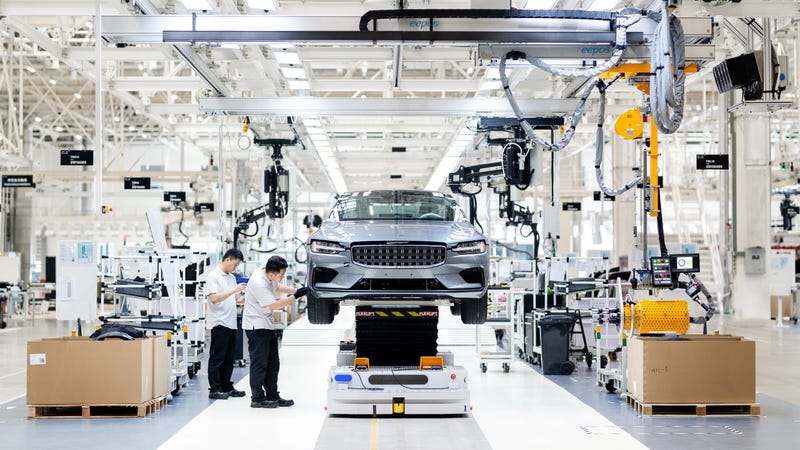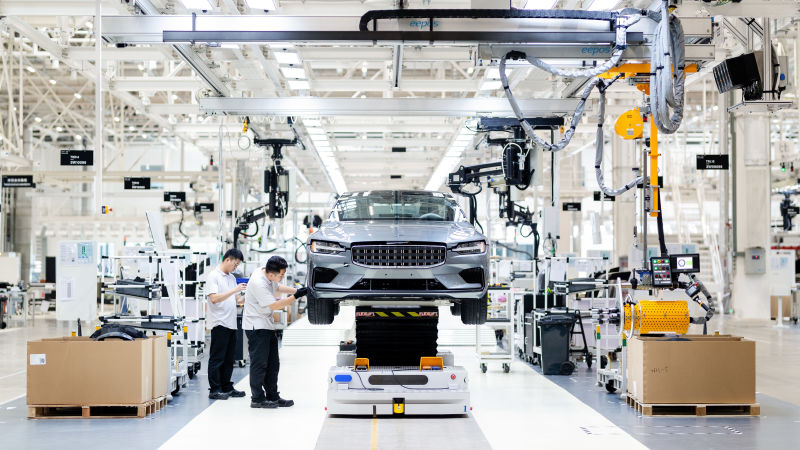
With a World Manufacturer Identifier and a striking new factory in Chengdu, China, Polestar’s metamorphosis from racing team and in-house tuner to full-fledged manufacturer is nearing completion.
The line between Polestar and its big brother from Goteborg, Volvo, has been pretty blurry. Started as a racing team by driver Jan “Flash” Nilsson to send Volvo 850s around a touring car track as fast as possible, Polestar only got in on the production car game in 2010 with the Volvo C30 Polestar concept, which took the team’s racing expertise and applied it (along with a coat of light blue paint) to Volvo’s little three-door hatch.
After the S60 and V60 got the light blue treatment in 2014 and Volvo bought the whole company one year later in 2015. Polestar began its transition from racing team and M-style tuning division to full-fledged automaker with a dual focus on electric power and performance two years later when it unveiled its first non-Volvo-branded car, the still S90-related Polestar 1 plug-in hybrid GT.

Advertisement
After unveiling the car, Polestar has still had few more milestones ahead of it before it was one of the big boys, a carmaker in earnest. In a press release from earlier this week, Polestar tells us about how they’re making good progress towards meeting those milestones.
First, The Polestar 1 is really only a Polestar if it’s got a Polestar VIN, or Vehicle Identification Number, which needs a Polestar World Manufacturer Identifier. The VIN, stamped into the car’s body in a number of specific locations, is like a car’s social security number and is made up of a number of components convey different attributes about that particular vehicle. Though the structure of a VIN can differ based on where a car is made, one thing doesn’t change and that’s the World Manufacturer Identifier, or WMI. Polestar was just assigned its own WMI, so it’s finally able to say that any cars it produces are theirs. No one else’s. Only Polestar’s.
Advertisement

Now that every Polestar is indeed a Polestar, the company has finally got somewhere to build the cars. Located in Chengdu, China, a healthy 22+ hour drive from Polestar’s parent company Geely in Zhejiang, the new Polestar Production Centre was designed by “internationally renowned” Norwegian design group Snøhetta to be both a production facility and an experience for owners. The LEED Gold-certified building is impressive to behold from both inside and out, and will include both a test track and a glass atrium above the immaculate production floor.
Advertisement

Polestar expects to build 1500 Polestar 1s at their Chengdu facility over a three-year production run. Its Polestar 2 follow-up, which Polestar itself claims will join “the competition around the Tesla Model 3,” will be built in a separate facility shared with Volvo in Luqiao, China starting next year. After the launch of the Polestar 2, the company plans to launch an electric SUV called (predictably) the Polestar 3. With an entire production facility initially intended for their limited production debut, perhaps Polestar will repurpose the facility for its third model come 2022.
Advertisement

All of this progress is exciting, but a carmaker is only as real as the cars it makes. We’ve been waiting for the Polestar 1 for nearly two years at this point and though we’ve seen how one is built and some of what it can do already (both virtually and in real life), there’s no replacement for finally getting behind the wheel. We’re looking forward to it.













